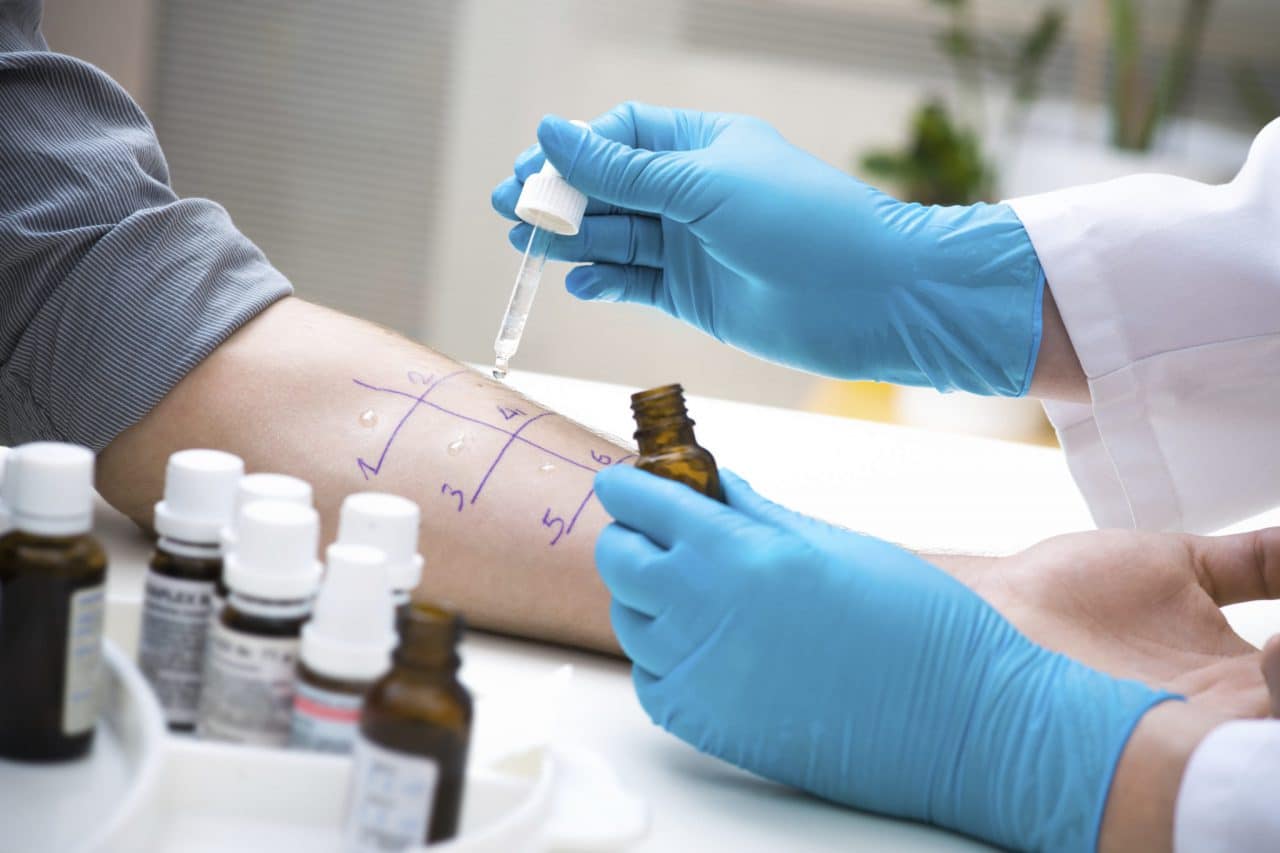The only way to treat your allergy symptoms is to determine exactly what is causing them. This is done through a series of allergy tests.

Allergy drops: an alternative to shots?
Allergy drops, or sublingual immunotherapy (SLIT), are drops prepared from allergen extracts that are the same allergen extracts that are used in subcutaneous shot immunotherapy. Instead of shots, they are placed under the tongue for approximately two minutes and then swallowed. Sublingual immunotherapy has been used in countries outside of the US for several decades. Allergy drops are endorsed by the World Allergy Organization and more information can be found at their website at: www.worldallergy.org
How are allergy drops different than medications?
Allergy drops (SLIT) are different from other over-the-counter or prescription allergy medications as they are made up of the allergens present in the pollen, dust mite or animal dander for which the patient has allergic reactions. They are administered in gradually increasing doses to induce tolerance in the immune system.
The drops are meant to reduce the overactive allergic branch of the immune system on a permanent basis. By changing the way the immune system responds to the allergens patients experience improvement in their allergy symptoms. They are not designed or effective for immediate relief of symptoms, and this means the patient taking allergy drops (SLIT) should still take their usual medications as directed by their physician until tolerance is built up over the first 3-6 months.
What is the difference between allergy shots and allergy drops?
Allergy shots are given by subcutaneous injection while drops are placed under the tongue. The extracts that are used for both are the SAME, although the dosing and the frequency at which they are administered are different.
Allergy drops will be taken every day, while shots are initially given weekly and eventually every 2-4 weeks. The key difference is that allergy shots must be administered in an office setting while allergy drops can be administered at home.
Common side effects
Most common side effects are mild and include throat irritation, oral itching/irritation, oral numbness, mild swelling under the tongue, and tongue itching. In very rare cases this can progress to a reaction that involves the entire body that requires the use of epinephrine. Generally, these mild reactions occur during the initial phase of increasing the dosing and then go away once the patient is on the maintenance dose which is when they are taking the same dose every day. This maintenance dose occurs during the first month of starting the allergy drops.
Are allergy drops FDA approved?
Although the same allergen extracts are used for allergy drops that are used for allergy shots, drop immunotherapy is a non-FDA approved method of delivering the liquid antigen. Use of allergy extracts under the tongue has recently received FDA approval but only for a few tablet forms of allergens, such as ragweed, timothy grass, and dust mite.
Are they effective?
There have been several studies looking at individual allergens and allergy drops (SLIT). These studies have shown in most cases a significant improvement in symptoms and decrease in medications needed. It’s harder to generalize the results of allergy drops (SLIT) as compared to shot immunotherapy as there are no ‘head-to-head’ studies comparing the two methods.
Are they safe?
Although there is a very small chance of having a systemic reaction to the allergy drops, to date there have been no reported deaths associated with the drugs used in Europe. We still recommend obtaining an auto injectable epinephrine device to be used in case of a severe or systemic reaction when you first start using the allergy drops (SLIT). In general, the reactions to allergy drops are probably less problematic than those reactions occurring with shot immunotherapy.
Who should take allergy drops?
Allergy drops can be safe and effective for many allergy sufferers, however there are a few people who will do especially well. These include:
- Those with a fear of needles
- Most children
- Those who are sensitive to only a few allergens, or, who have severe symptoms during one or 2 allergy seasons
- Asthmatics
- Those who suffer from chronic sinusitis
- Patients who have difficulty adhering to allergy shot protocols of in-office shots, or those who travel quite a bit and cannot make it into the office on a regular basis due to work schedules.
Who should not take allergy drops?
- Those with severe and uncontrolled asthma
- Those with a history of severe reaction to allergy drops in the past
- Those with a history of eosinophilic esophagitis
Can allergy drops be given for all types of allergies?
Allergy drops can be given for all types of airborne allergens… pollen, dust mite and animal danders. They are not be used for food allergies, allergies to stinging insects, or allergies to medications.
How long will I take allergy drops?
Like allergy shots, the current recommendations are to take allergy drops for 3-5 years. Most people will see improvement of symptoms in the first 3-6 months, so in general we recommend starting the allergy drops at least 12 weeks before your most problematic season.
Will my insurance cover allergy drops?
Currently, because there is no FDA approval, most insurance companies do not cover the cost of allergy drops or sublingual drop immunotherapy. Allergy drops usually do qualify for HSA or flex spending reimbursement. Check with your insurance company for further details.
Call David R Brown MD Ear, Nose and Throat at (505) 820-9945 for more information or to schedule an appointment.
